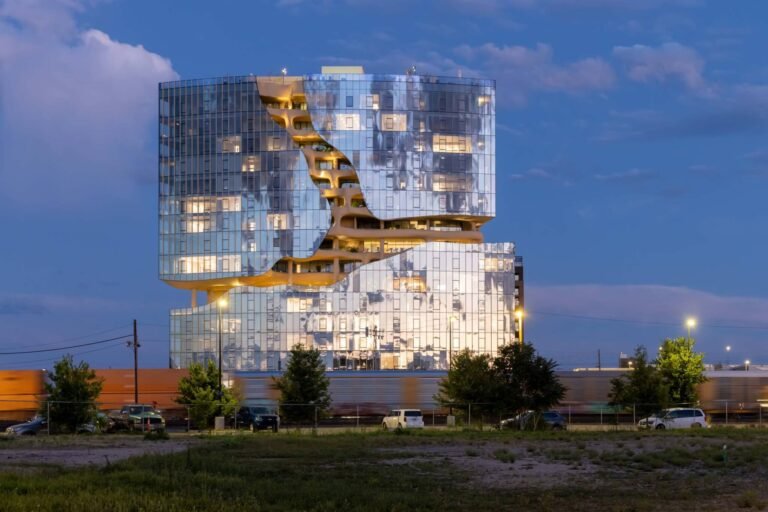The Evolution of Architecture in the Philippines Through the Years
The Evolution of Architecture in the Philippines Through the Years

The history and culture of the Philippines are reflected in its architectural heritage, with numerous influences from other nations paving the way for the contemporary designs we see today, a mixité of cultural influences amongst Western-style buildings. Philippine architecture has grown along with the progress of the nation and its people, but memories of a glorious past are still embedded within the nation’s history.
The current Philippine architecture is an outcome of authentic growth that has enriched the reception of its influences. Its architectural landscape is a contrast between small traditional huts; towering Spanish colonial fortifications; American Commonwealth architecture; and today’s contemporary, concrete structures of the cities. As a result, the Philippines has become an architectural melting pot. This article will explore the ways in which architecture in the Philippines has since evolved from its initial, humble designs, to the towering structures we see today.

Bahay Kubo
Related Article
With approximately 7640 islands–2000 of which remain uninhabited–the Philippine archipelago has immense space and vast natural resources for the act of building homes, which the ancestral tribes used to their advantage in building the first known Filipino home. Bahay Kubo (Nipa Hut), is a small hut comprising of nipa, bamboo, and other native materials. Many citizens to this day still adopt this style of habitation due to its simple design, ease of execution, and its readily available materials. To this day, the Bahay Kubo is a common sight in rural communities, as well as in tropical resorts.

Bahay na Bato
The Spanish colonial era brought about stone and masonry construction in the Philippines, which led to the development of infrastructure, namely roads and bridges, paving the way for the introduction of another traditional Filipino home, Bahay na Bato (Stone House). With adobe walls as its structural foundation and wood as the main materials for the large open-layout upper levels, the Hispanic style that originated from Central America was ideal for the Philippine climate fraught with natural disasters.

Tsalet
With the transfer of colonial power from Spain to the United States in 1898 came a number of architectural advancements in the Philippines. One of these was the emphasis on sanitary values, which laid the foundation for the introduction of a toilet, or a cubeta, through a pail conservancy system. This led to the introduction of the concept of a well-planned neighborhood called Sanitary Barrio, and later tsalet.
Defined as ‘the crossbreed of the tropical features of vernacular buildings with hygienic structural principles and modern materials’, tsalet designs brought about simplified functions of the Filipino home. Private garages had become commonplace, as well as the occupants’ bathroom and kitchen now being situated inside the home, employing modern features such as the flush system and modern shower.

Bungalow
Amidst the American colonial period came about further major architectural developments, including the origin of the most common type of occupancy in the country, the bungalow. These low-rise homes sport a pitched roof and a horizontal shape, with the roof typically made of galvanized iron, walls made of concrete, and equipped with a yard, a garden, or covered car port–if not all three.
This traditional Filipino house is often found in urban areas, as they are easier and less expensive to build than a multi-story home. With caring for elders being significant in Filipino culture, the bungalow is also ideal for senior residents due to its size, ease of maintenance, and suitability for movement through the home. Bungalows also offer more privacy to their occupants who can utilize the surrounding trees and fences to block the windows.

Townhouse
Townhouses are another common type of home in the Philippines, typically found in the early residential developments in urban areas. Subdivisions across the country have adopted this type of design, providing an urban feel without having to live in the city center. Townhouses are considered ‘starter homes’ for new families, especially as they are the most economical in terms of lot area and overall cost of building and maintenance.

Condominium
Now arriving at the most recent and contemporary style of home in the Philippines, condominiums have taken over major cities as a result of the comfort and convenience they provide to make them the ideal residence for city dwellers. Residents have direct access to gyms and recreational facilities, without the added worry about maintaining yards and garages. These types of homes come with their own building security, landscapers, repairmen, housekeepers, and all kinds of services. Its visual impact paints the skylines of the country’s central city hubs today.


From influences of the Mediterranean coast to minimalism, many home designs can be seen in the Philippines, but the above remain the basis of what most homes look like in the country. Advancements in home building technology and materials, as well as the introduction of new architectural concepts, have since changed the definition of a Filipino home.
As new home designs amongst townhouses and condominiums continue to rise in popularity, combinations like Bahay Kubo-styled bungalows are still repeatedly being redefined. As the Philippines opens up to more of the world’s architecture and continues to stay true to its own, only time will tell as to what the Filipino home dweller can look forward to in the future, as well as what the next step in the evolution of Filipino architecture shall entail.





